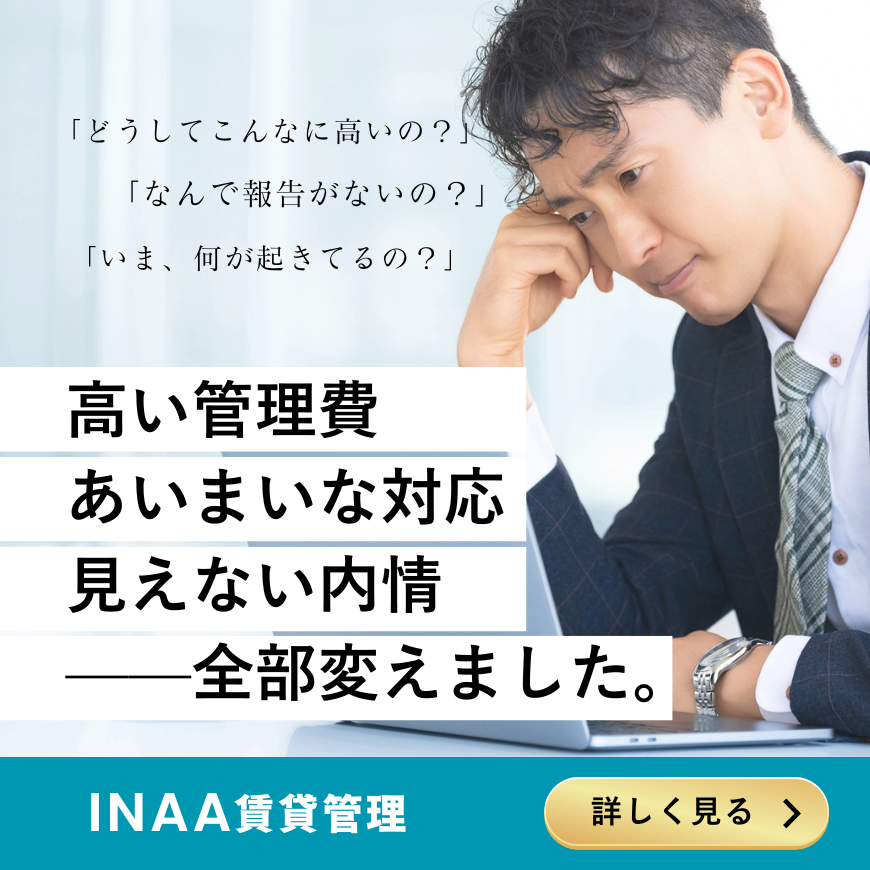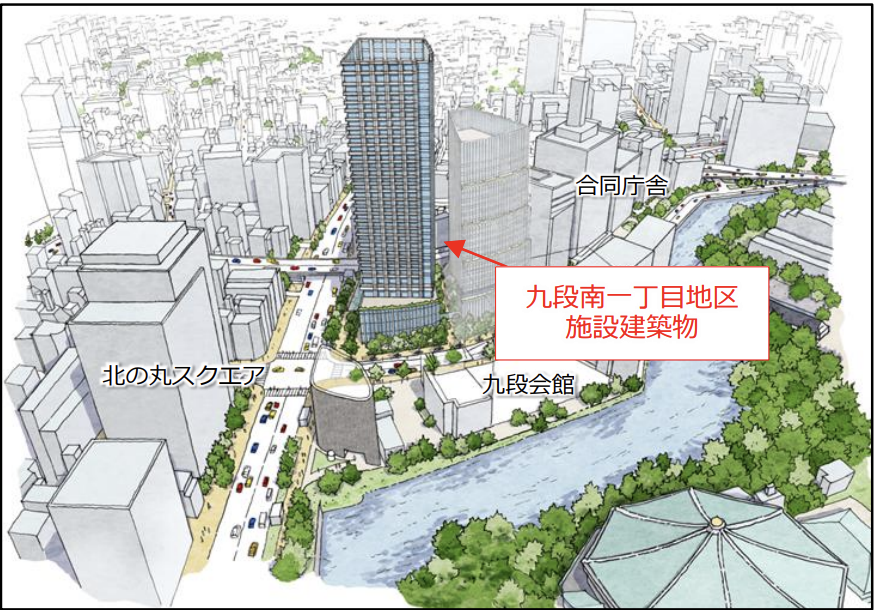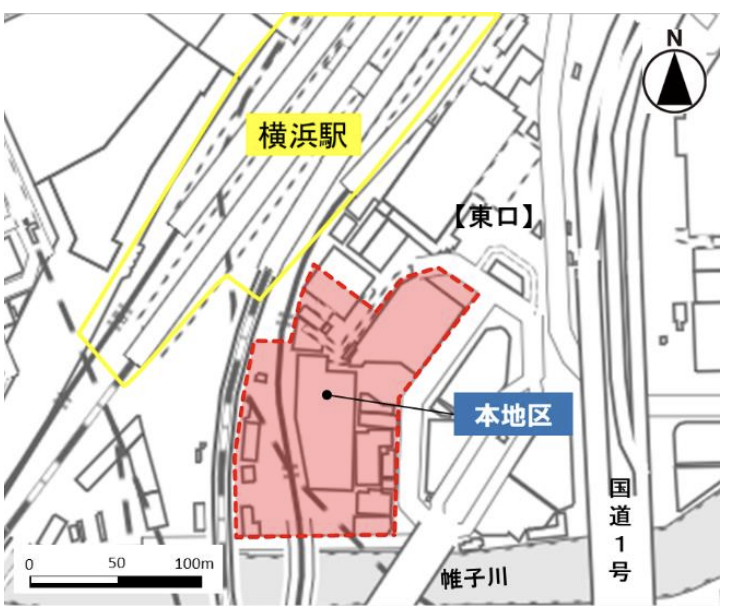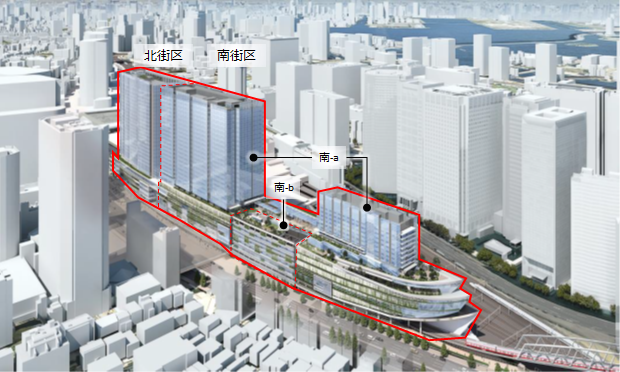Are you aware of the new affordable housing initiative that the Tokyo Metropolitan Government is planning to launch with additional funding? In recent years, housing prices and rents in Tokyo have skyrocketed, making it difficult for average-income households to find suitable housing. In response to this situation, the Tokyo Metropolitan Government has launched a large-scale support program to increase the number of affordable and secure housing options for families with children and other vulnerable groups. This article provides an easy-to-understand explanation of what affordable housing is, the details of the Tokyo Metropolitan Government's new policy, its background, the target residents, comparisons with similar initiatives in other regions and overseas, as well as future plans, challenges, and the roles of relevant stakeholders. What is affordable housing?
The term “affordable housing” comes from the English term “Affordable Housing,” which refers to housing that is available at rents or prices lower than market prices. In other words, it refers to housing that is provided at a price range that can be easily paid by middle- and low-income households. In Japanese, it is also described as “reasonably priced housing” or “low-cost housing.”
The Tokyo Metropolitan Government defines “affordable housing” as housing that allows families with children, in particular, to live comfortably at affordable rents. Traditionally, public housing (such as municipal housing) has been provided for low-income individuals, but eligibility for such housing is subject to strict income restrictions and high lottery odds, making it difficult for many to secure housing. On the other hand, even middle-income households that do not qualify for public housing often face heavy housing costs in Tokyo's current housing market and struggle to secure adequate living space or a suitable environment. “Affordable housing” can be seen as a new category of housing designed to address this “mismatch between housing and income.”
Specifically, it envisions rental housing with rent levels capped at approximately 80% of private market rates. For example, a property with a market price of 100,000 yen per month could be rented for approximately 80,000 yen. Supporters such as the Tokyo Metropolitan Assembly's Komei Party propose that, depending on implementation, rent could be reduced to approximately 60% of market rates (60,000 yen for the same 100,000 yen property). In this way, “affordable housing” is housing aimed at providing appropriate living environments at an affordable cost for more people.
Overview of Tokyo Metropolitan Government's Affordable Housing Policies
The Tokyo Metropolitan Government will begin implementing its affordable housing supply promotion measures in earnest starting in the 2025 fiscal year. Specifically, it will establish a public-private partnership fund (endowment) and use this mechanism to supply low-cost rental housing through a new scheme.
The Tokyo Metropolitan Government will contribute approximately 10 billion yen to this project, and plans to raise an equal amount from the private sector, forming a fund totaling approximately 20 billion yen. This fund will be used to acquire and renovate vacant houses and used housing in Tokyo, or to construct new housing, which will then be rented out at approximately 80% of market rent. For example, the “Vacant House Utilization Fund” will have a scale of 4 billion yen (2 billion yen from the Tokyo Metropolitan Government) and is expected to provide housing for approximately 80 households. Additionally, multiple funds with specific purposes, such as the “Childcare Support Fund” and the “Single-Parent Support Fund,” are planned to be established.
Through this public-private fund, the Tokyo Metropolitan Government will leverage private capital and expertise to promote housing supply. By serving as a catalyst and contributing capital, the government will collaborate with private investors and developers to establish a housing supply model that integrates public funds and private capital. This approach differs from traditional methods, such as the government directly constructing and managing public housing or providing cash subsidies to low-income individuals, and is gaining attention as a new approach.
The target area is expected to cover the entire Tokyo Metropolitan Area. While there is high demand in urban areas (such as the 23 wards) where housing costs are rising sharply, there are also vacant houses that can be utilized in suburban areas. The initiative is expected to address both the needs of urban areas and the vacant resources in suburban areas. By the 2025 fiscal year, the Tokyo Metropolitan Government plans to solicit proposals for fund operators and discuss specific schemes, with the aim of starting housing provision (move-in) by the 2026 fiscal year. While the total number of units to be supplied is currently undecided, the Tokyo Metropolitan Government aims to first accumulate expertise in affordable housing supply through this initiative and eventually establish an environment where affordable housing is continuously supplied not by the government but through private-sector initiatives.
Background of funding: Why affordable housing now?
The Tokyo Metropolitan Government has decided to invest a significant amount of public funds (10 billion yen) in this policy due to the growing challenges surrounding housing in recent years.
First and foremost is the sharp rise in housing prices and rents. In Tokyo, the average price of new condominiums has surged to over 100 million yen per unit in recent years, driven by rising construction costs and land prices. Even in the rental market, rising living costs have driven up rental prices, leading to complaints that “rent is too high to afford housing in Tokyo.” In reality, many people are struggling to find suitable housing amid rising living costs and rental prices, particularly families with children who are seeking larger homes but cannot find affordable options.
This heavy burden of housing costs has led to what is referred to as “housing poverty,” a social issue of growing concern. Households that must allocate a significant portion of their income to rent and cut back on other living expenses, or those forced to continue living in cramped conditions with their families, see their quality of life deteriorate. In particular, the inability of young people and families with children to secure stable housing in Tokyo could lead to population outflow from the city to other regions. In fact, recent years have seen the phenomenon of families with children unable to afford housing costs moving out of the metropolitan area.
Furthermore, these housing environment issues are not unrelated to the declining birthrate and population decline. High housing costs can also be a factor in people hesitating to marry or have children, or in reducing the number of children they have. The Tokyo Metropolitan Government has launched this policy with a focus on families with children, with the intention of linking housing support to measures to address the declining birthrate and population decline. If families can secure housing where they can live with peace of mind, it will become easier to continue raising children in urban areas and to balance work and childcare.
At the same time, Tokyo faces another challenge: the increasing number of vacant homes. Unused and abandoned homes pose problems in terms of disaster prevention and public safety. For this reason, the Tokyo Metropolitan Government has not only focused on constructing new large-scale housing but also on utilizing existing vacant homes and used housing. The goal is to simultaneously address the vacant housing problem and ensure housing affordability.
In summary, this affordable housing policy is one measure aimed at addressing the dual issues of the strain on urban residents' livelihoods caused by rising housing costs and the waste of resources due to the increase in vacant housing, with the ultimate goal of creating a Tokyo where everyone can live with peace of mind.
Eligibility criteria for residents
So, who is eligible to live in these affordable housing units? The main target groups identified by the Tokyo Metropolitan Government are middle-income households with children and single-parent households (single mothers or single fathers). In other words, the focus is on households with average or below-average incomes where the primary earner's income alone is insufficient to secure adequate housing in terms of size and environment at current Tokyo rent levels.
Typically, public housing such as municipal housing is provided for low-income individuals, but households that slightly exceed the income criteria are excluded from public support. However, these “gap” households, which struggle economically in the private rental market, are the primary candidates for affordable housing. Additionally, single-parent households face significant challenges in both income and housing security, making them a priority for support.
Furthermore, the Tokyo Metropolitan Assembly has suggested that economically disadvantaged young people should also be included in the eligibility criteria. This could include young single people with unstable incomes from non-regular employment or new graduates facing heavy rent burdens, depending on the circumstances.
The details of the eligibility criteria (such as income limits and household size requirements) are scheduled to be finalized by the 2025 fiscal year and are currently “undecided.” Since this is a business proposal-based project through a fund, the specific criteria will depend on the proposals submitted by the operators. However, since the Tokyo Metropolitan Government aims to ensure that this housing reaches those who truly need it, the basic requirements are likely to include conditions such as “households with children,” “single-parent households,” and “households with income below a certain threshold” (high-income households are excluded), as well as residency or employment within Tokyo and a genuine need for housing.
For example, other programs may set conditions such as “households with children in elementary school or younger” or “annual income below a certain amount,” and similar criteria are likely to be applied to affordable housing as well. In any case, the recruitment and selection of applicants are expected to be finalized in the future. If there is high demand, a lottery or selection process may be necessary, but the Tokyo Metropolitan Government will strive to establish a system that provides affordable housing to those who truly need it in a fair and transparent manner.
Comparison with similar policies in other municipalities and overseas
While Tokyo's initiative is novel in Japan, do similar policies exist in other municipalities or overseas? Here, we will briefly examine examples from both Japan and abroad.
Efforts by other municipalities in Japan
In Japan, there have been fragmented public housing programs (such as municipal housing) and rent subsidy programs administered by local governments. For example, in Suginami Ward, Tokyo, a nationwide first program has been launched to subsidize a portion of rent for low-income young people and families with children when they move into private rental housing (reportedly up to approximately 300,000 yen per year for two years). Such efforts to reduce rent burdens at the local government level are emerging.
However, the approach of establishing a large-scale public-private fund to directly provide housing, as in Tokyo, is highly advanced. Similar initiatives led by the private sector are also beginning in Japan. In Nagoya City, a private company is providing housing for single-mother households at approximately 70% of market rent, attracting attention. This is a socially responsible business initiative, but it shares the same objectives as Tokyo's policy and can be considered a pioneering example of increasing the supply of housing with rent commensurate with income. Officials in Tokyo are also considering incorporating such advanced examples into their policy.
If Tokyo's initiatives gain traction, there is a possibility that similar affordable housing policies will spread to other metropolitan areas. Housing issues are not limited to Tokyo but are common challenges in urban areas such as Osaka and Kanagawa Prefectures, and are receiving attention nationwide.
Similar policies overseas
“Affordable Housing” is a widely used concept overseas and is incorporated into policies in many major cities. For example, in major cities in Europe and the United States, it is common for developers to be required to set aside a certain percentage of new condominiums and apartments for low- and middle-income households at affordable prices. In cities such as New York, London, and Paris, developers are required to include low-rent housing in their projects, and efforts are made to ensure that people from diverse income levels can live in the city.
Additionally, there has been a recent trend of private companies taking the lead in addressing housing issues. In the U.S. West Coast, where housing costs have skyrocketed due to the rapid growth of IT companies, for example, Meta, the company operating Facebook, has contributed approximately $38 million (about 5 billion yen) to support affordable housing and homeless assistance projects in the local area. Furthermore, Amazon announced in 2021 the establishment of a 2 billion dollar (approximately 200 billion yen) housing fund and plans to develop over 20,000 affordable housing units in the Seattle area and beyond. These are examples of companies taking responsibility for local housing issues and investing significant funds as part of their social contributions. The backdrop to this is the problem of skyrocketing rent in areas where companies are concentrated, making it difficult for ordinary people to afford housing. Companies have stepped in to provide housing support to mitigate the impact of their own operations.
Meanwhile, in Europe and Asia, there are examples of public social housing (social housing) being developed. For instance, Vienna is renowned for its municipal housing, which provides affordable housing to a wide range of citizens, including middle-income earners. In Singapore, over 80% of the population lives in government-led housing (HDB), demonstrating the country's robust public housing system. Tokyo's policies are not as large-scale as public housing, but they share the same idea as some overseas models in that they use public funds to provide housing through private initiatives.
Overall, Tokyo's affordable housing policies are a pioneering challenge in Japan and are being implemented while learning from overseas success stories and challenges.
Future schedule and challenges
Future schedule includes the design of a specific fund scheme and the selection of fund managers and housing operators by the end of the 2025 fiscal year. In the 2026 fiscal year, housing acquisition, renovation, and new construction projects funded by the fund are expected to begin, with occupancy starting as early as the 2026 fiscal year (by March 2028). Residents are likely to begin moving into these homes around 2026–2027. Going forward, the fund's operational performance will be monitored, and additional investments, the establishment of new funds, or the expansion of the system may be considered as needed.
However, this policy is still in its early stages and has a strong experimental nature, with many challenges ahead. First, there is the issue of the scale of housing units to be supplied. Even with a budget of 20 billion yen, considering the costs required per housing unit, the number of units that can be supplied in the initial phase may be limited to several hundred units. Compared to the number of people in need of housing across Tokyo, this is by no means sufficient. A Tokyo Assembly member stated, “We do not expect this policy to solve all housing issues,” emphasizing that it is merely the first step and that the direction will be explored in the future.
Another key factor is whether sufficient cooperation can be obtained from the private sector. The Tokyo Metropolitan Government is pinning its hopes on the existence of “impact investors” who prioritize social contribution, and the participation of companies and investors willing to cooperate without regard to profit is a prerequisite. However, it remains uncertain how much private capital will be raised and whether it will be possible to sustainably provide low-rent housing. While investors in the fund naturally require a certain return, the mechanism involves keeping the return rate low to lower rent, making it challenging to balance profitability and public interest. The Tokyo Metropolitan Government has even stated that “in extreme cases, returns (profits) to the city could be zero,” and is urging the private sector to invest not for profit but out of a sense of social responsibility. The success of the initiative will depend on how many players can be convinced to align with this philosophy.
Additionally, there are operational uncertainties. Since this is a new approach using a public-private fund model, the Tokyo Metropolitan Government has explained that “the specific scheme will be determined based on proposals from operators,” and details are not yet finalized. As a result, the Tokyo Metropolitan Assembly has raised concerns such as “the number of units to be supplied and rent settings are unclear” and “whether this method truly represents the best housing support policy.” In other words, there is no guarantee that the plan will effectively provide affordable housing at low rents, and this will need to be verified in the future.
Another concern raised is the potential for “undue pressure on private businesses.” The argument is that if the government provides housing at low rents, it could compete with private landlords in the surrounding area and hinder their business operations. In response, the Tokyo Metropolitan Government has stated that “we do not plan to supply such a large volume, and at this stage, it will not amount to undue pressure on private businesses.” Rather, they suggest that if such a supply is feasible, it would be desirable, but if it were to have a significant impact, they would consider measures to ensure coexistence with the private sector. In reality, given that the supply will be limited for the time being, the likelihood of significant market distortion is low. However, if the program expands in the long term, harmonization with the private rental market may become a consideration.
Finally, the selection of residents and the quality of operations are also challenges. To ensure that the housing is fairly distributed to those who truly need it, transparent and fair resident recruitment and selection processes are essential. Additionally, even though the rent is low, tenants are still paying to live there, so attention must be paid to the quality of the buildings and management. A “cheap but poor” approach will not stabilize tenants' lives. Operators will also be responsible for maintaining appropriate housing quality and support systems. The Tokyo Metropolitan Government, as a supporter of the initiative, will monitor operational conditions and provide guidance for improvements.
As mentioned above, there are many challenges ahead, but the significance of this policy lies in taking the first step. Housing issues cannot be resolved overnight, but trying new approaches may open up new possibilities. The Tokyo Metropolitan Government plans to accumulate experience through this trial and use it to expand and improve future policies.
Roles of stakeholders and expected effects
Various stakeholders will collaborate on this affordable housing initiative. Let's take a look at the roles of each stakeholder and the expected effects of this policy.
- Role of the Tokyo Metropolitan Government (administration): The Tokyo Metropolitan Government is the initiator and promoter of this project and will first be responsible for funding and designing the system. The 10 billion yen investment by the Tokyo Metropolitan Government will serve as seed money to attract private funds, and the Tokyo Metropolitan Government will set the framework for the fund, decide on the general criteria for eligible applicants, and conduct publicity. Additionally, the government may provide support by offering land it owns or relaxing regulations as needed. By getting involved, the government plays a role in guiding policy to ensure the supply of “affordable, high-quality housing,” which is difficult to achieve through pure market mechanisms. While this entails fiscal burdens for the government, it prioritizes the social returns (such as stabilizing residents' lives and maintaining the population) that can be achieved through this initiative.
- Role of private developers and investors: The private sector will be responsible for funding and practical housing supply. Investors in the fund (such as companies, financial institutions, and high-net-worth individuals) may receive lower returns compared to conventional investments, but they participate as impact investors contributing to the resolution of social issues. Real estate development companies and housing management companies will acquire, renovate, or construct properties using funds from the fund and operate them as rental properties. The private sector's expertise (property selection, construction and renovation technology, rental management experience, etc.) will be leveraged to provide efficient and comfortable housing for residents. A member of the metropolitan assembly stated, “Although it is in the form of a fund, the purpose is to solve social issues, and we hope that private sector investors will participate out of a sense of social responsibility rather than for profit.” This scheme is characterized by the participation of the private sector with a social mission in response to this call.
- Role of NPOs and community organizations: Nonprofit organizations and community groups can also play an important role as partners. For example, an NPO supporting single-parent households can communicate the needs of single-mother households to the government and businesses, and collaborate in tenant recruitment and living support. Local residents' associations and welfare organizations can also support new residents in integrating into the community and serve as a point of contact for those in need. By complementing the administrative and corporate sectors with the detailed support they often overlook, NPOs and other organizations contribute to creating an environment where residents can live comfortably and securely.
The expected effects of such collaboration among stakeholders are as follows:
- Effects on Tokyo residents (stability of living): Households that are able to move into affordable housing will have reduced rent burdens, creating financial leeway. If they do not have to spend excessively on housing, they will have more money to spend on other living expenses such as education and food, improving their overall quality of life. Additionally, moving from cramped housing to a home with appropriate space allows children to grow up in a more comfortable environment, improving privacy and hygiene. Above all, stable housing is the foundation of life. One stakeholder remarked, “Housing is fundamental. When you have a stable place to live, your mind becomes richer.” Stable housing also has a positive impact on physical and mental health, contributing to an environment where people can focus on work and childcare.
- Effects on society as a whole (measures to address the declining birthrate and revitalize local communities): Improving the living environment for families with children will foster a city environment in Tokyo that is conducive to raising children. If households that have moved from Tokyo to the suburbs due to housing costs remain in the city, this will help to curb the outflow of population from Tokyo and may also contribute to supporting the birthrate in the future. If young people can continue to live in cities, it will help secure the labor force and maintain the vitality of cities. In addition, the utilization of vacant houses will improve neighborhood safety and aesthetics, and is expected to contribute to the revitalization of local communities. Renovating dilapidated houses and making them livable will also enhance disaster prevention and safety, and the surrounding shopping districts will become more vibrant as more people move in.
- Effects on administration and policy (creation of a model case): If this initiative is successful, it will establish a new housing policy model for Tokyo. Demonstrating that housing issues can be addressed using methods that do not rely solely on public housing will expand policy options in the future. Tokyo has stated that it hopes to “establish know-how through this measure and create an environment where private-sector-led supply becomes possible in the future.” In other words, the goal is to create a situation where the private sector can form an affordable housing market as a social mission without the government having to continue providing funds indefinitely. In the future, if successful cases accumulate through this fund and a model for “affordable housing that is also viable as a business” is demonstrated, it could spread nationwide.
- Effects on private companies (CSR and new markets): For participating private companies, this is not just volunteer work but also contributes to enhancing corporate value. Contributing to the resolution of social issues can enhance a company's brand image, fulfill its CSR (corporate social responsibility), and instill pride in its employees. Furthermore, if the supply of affordable housing gains traction in the future, it could lead to the development of new real estate business markets. Even if the project is currently operating at a loss, it has the potential to evolve into a sustainable business model through scale expansion and efficiency improvements. In this sense, there are long-term benefits for the private sector as well.
In summary, Tokyo's affordable housing policy is a project in which the government, private sector, and community work together to tackle the city's housing issues. By each stakeholder fulfilling their respective roles, results that could not be achieved alone can be expected. Ultimately, the goal is to ensure that more Tokyo residents can live in stable housing and with peace of mind, as reflected in the phrase, “Housing is the foundation of life.” If this challenge bears fruit, Tokyo will become a friendly city where everyone can continue to live, and it will also lead to the overcoming of challenges such as the declining birthrate and aging population and the decline in economic vitality.
Tokyo's affordable housing policy is still in its early stages, but its progress is being watched closely nationwide. Depending on how things progress, challenges will undoubtedly arise, but the city plans to make flexible improvements as necessary to get this new housing support policy on track. For us, ordinary residents of Tokyo, this is an important policy that affects our own lives and those of those around us, so we should keep a close eye on it. When relevant information is made public, please be sure to check it out. We look forward to seeing what kind of results Tokyo's efforts will yield in creating a society where everyone can live in a home where they feel safe and secure.

Daisuke Inazawa
Representative Director of INA&Associates Inc. Based in Osaka, Tokyo, and Kanagawa, he is engaged in real estate sales, leasing, and management. He provides services based on his extensive experience in the real estate industry. Based on the philosophy that “human resources are a company's most important asset,” he places great importance on human resource development. He continues to take on the challenge of creating sustainable corporate value.

.png)













